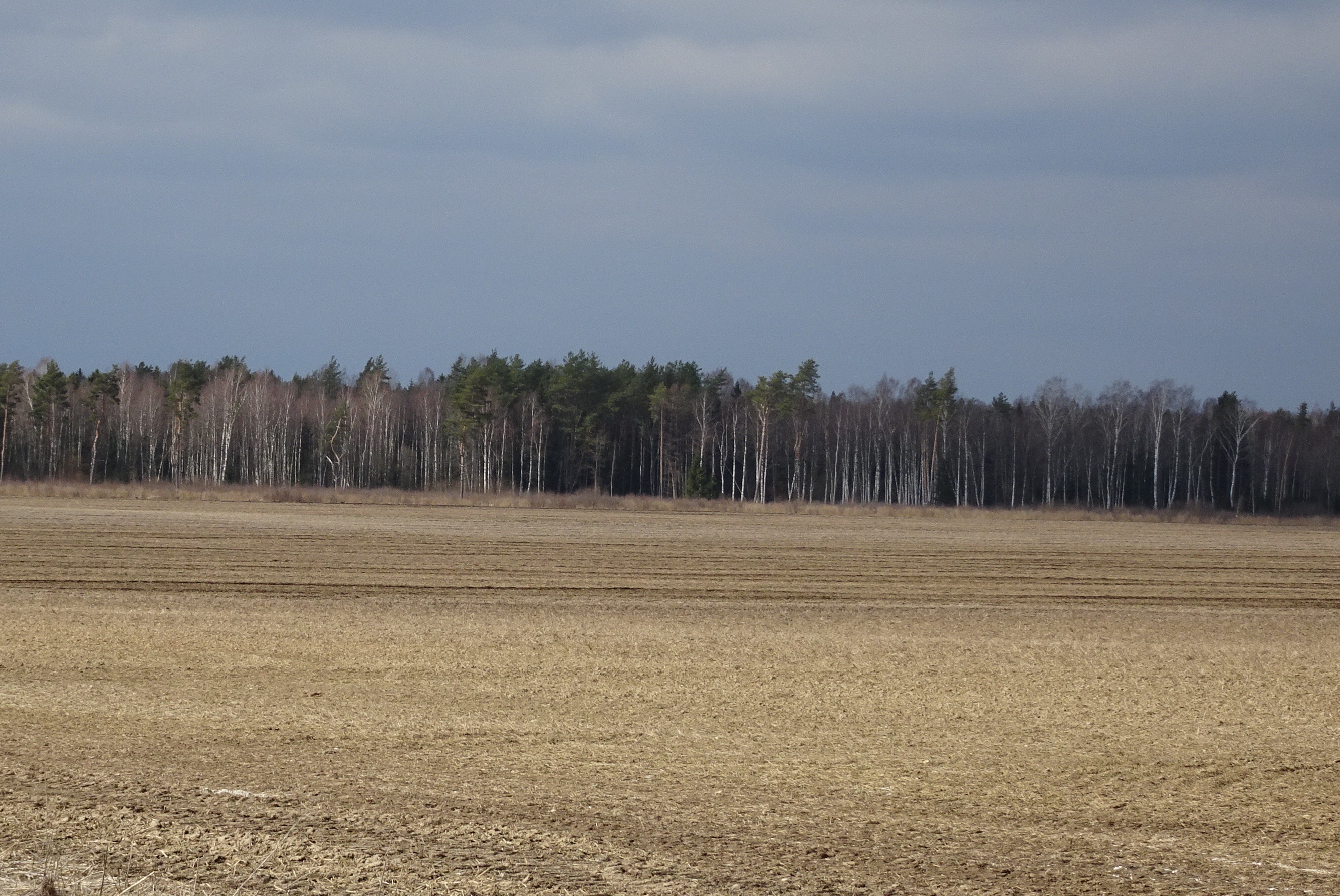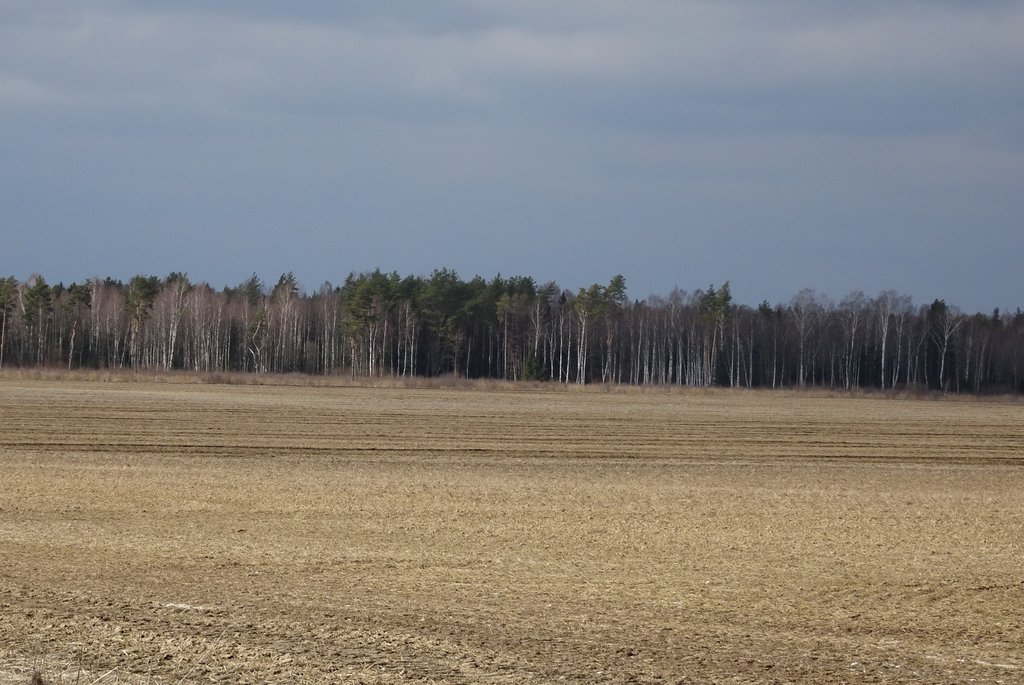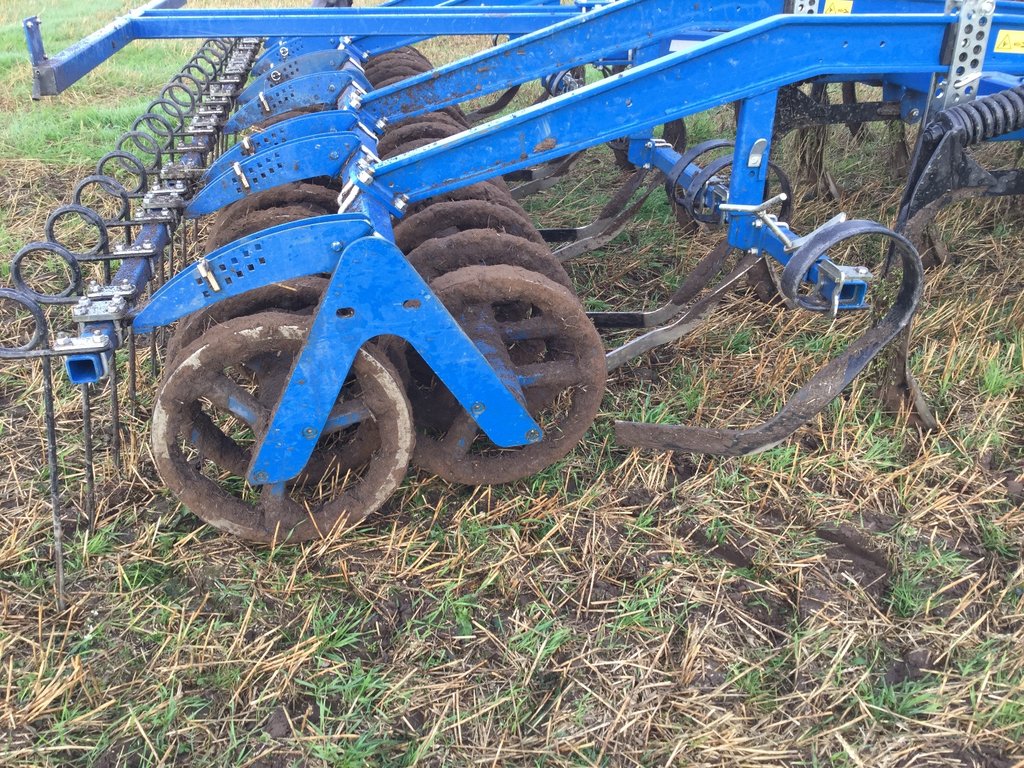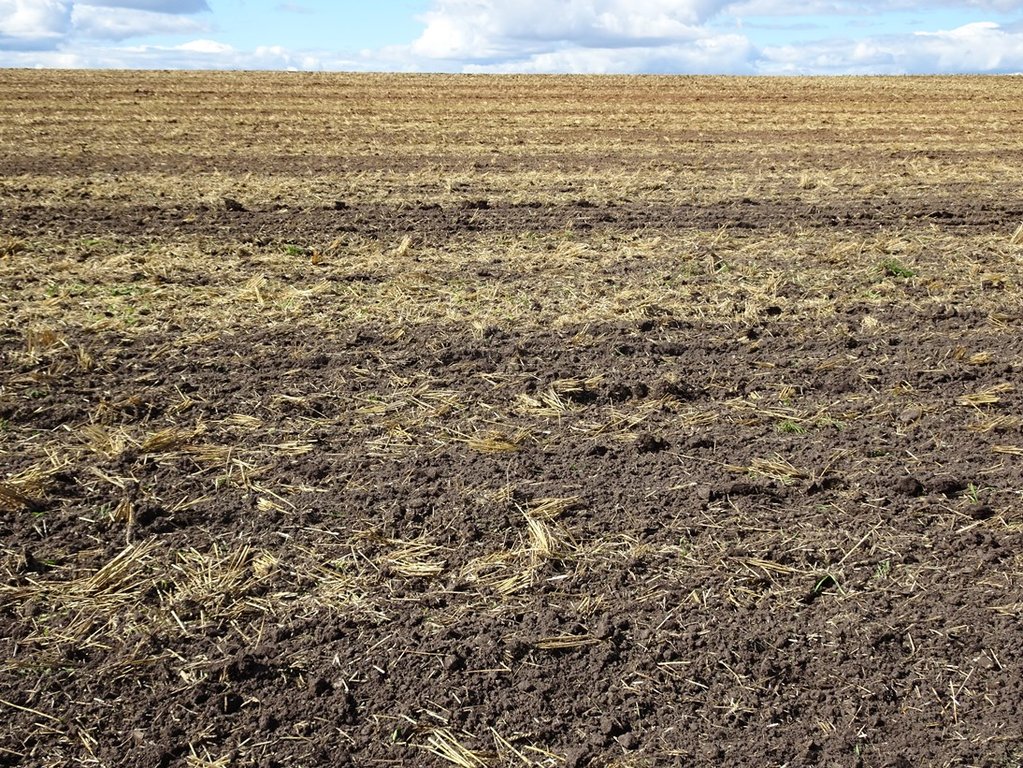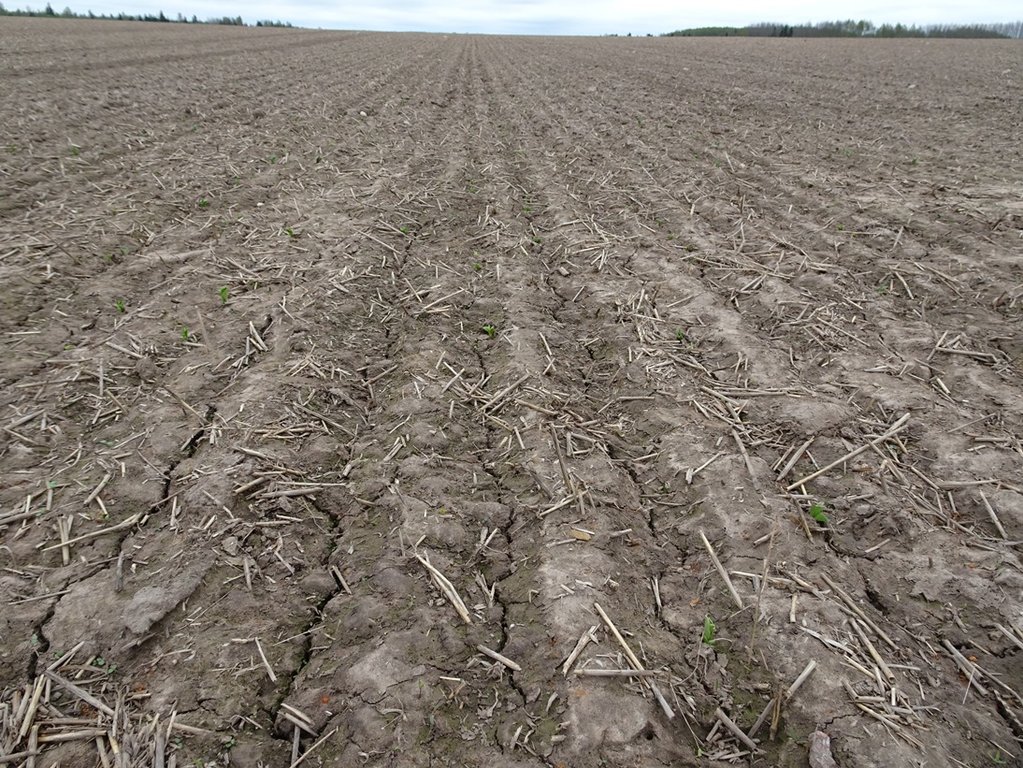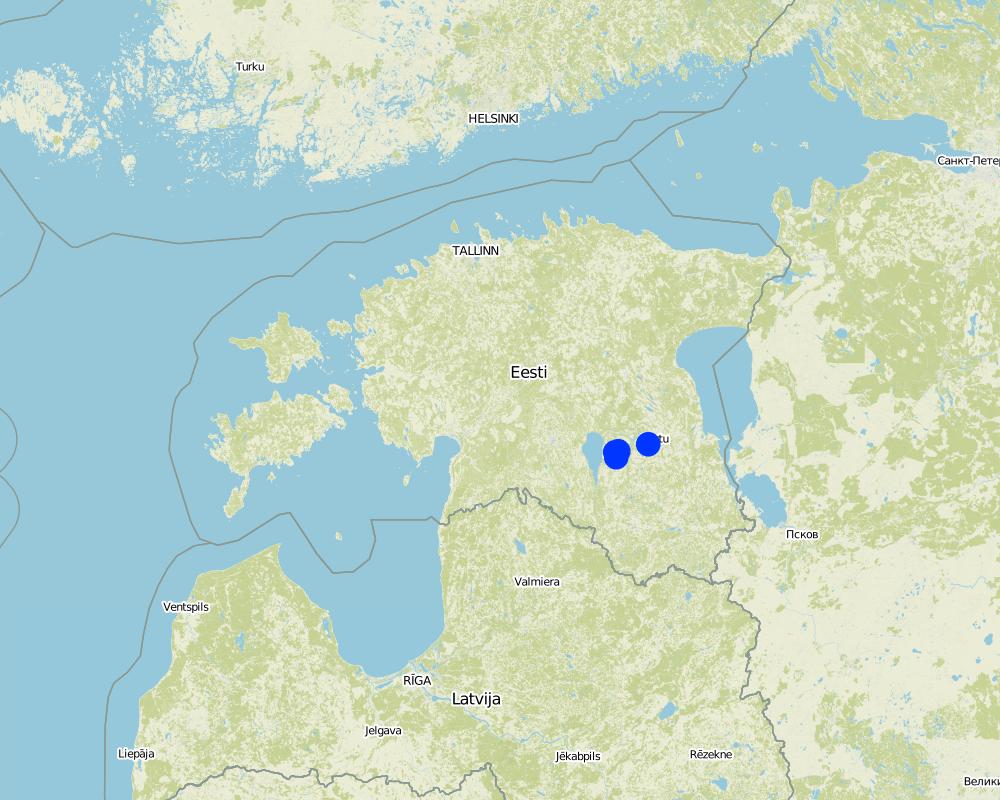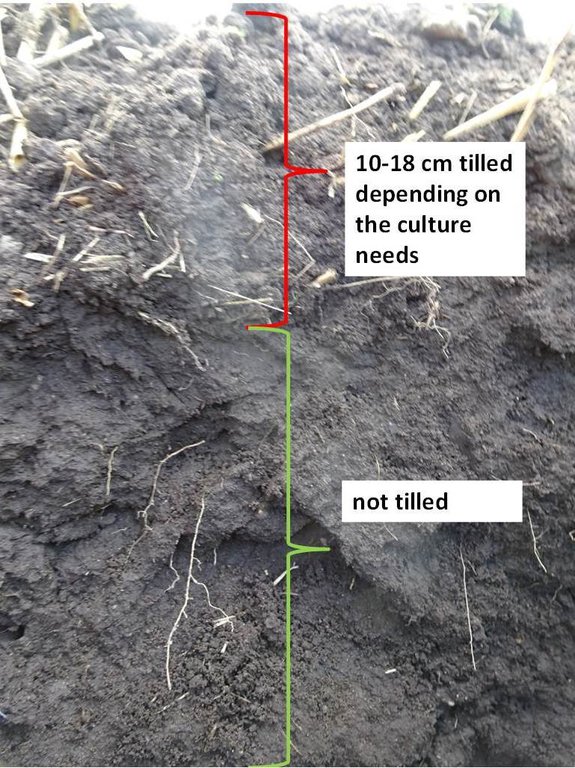Reduced tillage [استونيا]
- تاريخ الإنشاء:
- تحديث:
- جامع المعلومات: Endla Reintam
- المحرر: –
- المراجعون: Ursula Gaemperli, Gudrun Schwilch
minimeeritud harimine
technologies_3120 - استونيا
عرض الأقسام
توسيع الكل طي الكل1. معلومات عامة
1.2 تفاصيل الاتصال بالأشخاص الرئيسيين لمصدر المعلومات والمؤسسات المشاركة في تقييم وتوثيق التقنية
الشخص (الأشخاص) الرئيسي لمصدر المعلومات
مستخدم الأرض:
Aruksaar Ahti
+37253448354
aruksaar@hot.ee
Viljameister OÜ
Tartumaa, Konguta vald, Kobilu küla, 61201
استونيا
researcher:
researcher:
Lauringson Enn
+37253402207
enn.lauringson@emu.ee
Estonian University of Life Sciences
Kreutzwaldi 1, 51014 Tartu
استونيا
اسم المشروع الذي سهّل توثيق/تقييم التقنية (إذا كان ذلك على صلة)
Interactive Soil Quality assessment in Europe and China for Agricultural productivity and Environmental Resilience (EU-iSQAPER)اسم المؤسسة (المؤسسات) التي سهلت توثيق/تقييم التقنية (إذا كان ذلك على صلة)
Institute of Agricultural and Environmental Sciences, Estonian University of Life Sciences (IAES/EMÜ) - استونيا1.3 الشروط المتعلقة باستخدام البيانات الموثقة من خلال WOCAT
متى تم تجميع البيانات (ميدانيا)؟:
18/05/2017
يوافق جامع المعلومات والشخص (لاشخاص) الرئيسي لمصدر المعلومات على الشروط المتعلقة باستخدام البيانات الموثقة من خلال WOCAT:
نعم
1.4 إعلان بشأن استدامة التقنية الموصوفة
هل التقنية الموصوفة هنا تمثل مشكلة فيما يتعلق بتدهور الأراضي، بحيث لا يمكن إعلانها تقنية مستدامة لإدارة الأراضي؟:
كلا
2. وصف تقنيةالإدارة المستدامي للأراضي
2.1 وصف مختصر للتقنية
تعريف التقنية:
Reduced (minimum) tillage is a tillage method that does not turn the soil over. Usually only the upper 10-18 cm of the soil surface is tilled.
2.2 وصف تفصيلي للتقنية
الوصف:
The technology is applied in sub-humid climate with an average of 696 mm of precipitations per year, from which more comes from July to October and less in March and April. Average annual temperature is +4 C, length of the growing period is 180-195 days. The territory is mostly flat, the southern part is hilly with slopes of 6-10%. Average altitude from the sea level is 50 m. About half of the Estonian territory is above 50 m and half is below it. Soils are from very shallow (less than 0.1 m) in the north to very deep (> 120m ) in the south. Soil cover is very variable. In the agricultural area the soils are medium textured with low (< 1%) to high (>5%) organic matter in topsoil. Groundwater is near the surface in wet soils and deep in hilly areas. Biodiversity varies from high to low depending on soil and landscape. Market orientation of production system is mixed and off-farm income is less than 10%. Relative level of wealth is average from individual households to cooperatives. Soil management is mechanized. Land belongs to land users, but is leased also in case of bigger farms (over 100 ha).
Reduced tillage is the tillage method used in agriculture to prepare the seedbed. Usually only the upper 10-18 cm of the soil surface is tilled. There is no use of ploughing and thus it is the method that does not turn the soil over. This may involve the use of a chisel plough, field cultivators, or other implements. Depth of the soil preparation depends on the culture in the rotation - before cereals 10-12 cm, before oilseed rape 15-18 cm. The main equipments to prepare the seedbed are the disc cultivator and the tine cultivator or a combined cultivator. The work can be ordered from contractors as well. Usually farms own the equipment.
The main goal is to maintain soil structure, to improve water infiltration, to reduce compaction, and to reduce fuel and labour costs. As there will remain 30% more residues on the soil surface it will promote the activity of soil organisms. Less disturbance in deeper layers increases number of earthworms and increases species diversity. The greatest benefits for the land users are the reduced fuel and labour costs. The reduced tillage is more suitable for crop rotations without root crops. For example, rotation can be as follow: winter oilseed rape - winter wheat - pea (or bean) - winter wheat - spring barley undersown with red clover - red clover. However, the soil compaction and weediness can drastically increase during the first years of the implementation without using a proper crop rotation or management plan. The soil conditions (compaction and weediness) can get worser inside the first 4 years and start to improve after that. It is not suitable for fields which are heavily affected by perennial weeds, as noninversional tillage can spread the weed roots and higher doses of herbicides are needed.
2.3 صور التقنية
2.5 البلد/المنطقة/المواقع التي تم تنفيذ التقنية فيها والتي يغطيها هذا التقييم
البلد:
استونيا
المنطقة/الولاية/المحافظة:
Tartu county
مزيد من التفاصيل حول الموقع:
Kobilu
Map
×2.6 تاريخ التنفيذ
في حالة عدم معرفة السنة بالتحديد، يرجى الإشارة إلى التاريخ التقريبي:
- منذ أقل من 10 سنوات (مؤخرًا)
2.7 إدخال التقنية
حدد كيف تم إدخال التقنية:
- من خلال ابتكار مستخدمي الأراضي
3. تصنيف تقنية الإدارة المستدامي للأراضي
3.1 الغرض الرئيسي ( الأغراض الرئيسية) للتقنية
- الحد من تدهور الأراضي ومنعه وعكسه
- خلق أثر اقتصادي مفيد
3.2 نوع (أنواع) استخدام الأراضي الحالية حيث يتم تطبيق التقنية

الأراضي الزراعية
- زراعة سنوية
المحاصيل الرئيسية (المحاصيل النقدية والغذائية):
winter and spring wheat, winter and spring barley, oat, rye, pea, bean, oilseed rape, corn for silage, buckwheat
إذا تغير استخدام الأراضي بسبب التقنية، قم بالإشارة إلى استخدام الأرض قبل تنفيذ التقنية:
Before the use of reduced tillage conventional tillage (with ploughing) has been used.
3.3 مزيد من المعلومات حول استخدام الأراضي
إمدادات المياه للأرض التي يتم تنفيذ التقنية عليها:
- بعلية
عدد مواسم الزراعة في السنة:
- 1
حدد:
One harvest of cereals per year.
3.4 مجموعةالإدارة المستدامة للأراضي التي تنتمي إليها هذه التقنية
- تحسين الغطاء الأرضي/النباتي
- الحد الأدنى من اختلال التربة
3.5 انتشار التقنية
حدد انتشار التقنية:
- منتشرة بالتساوي على مساحة
إذا كانت التقنية منتشرة بالتساوي على منطقة ما، فحدد المنطقة التقريبية المغطاة:
- 10-1 كم2
التعليقات:
2/3 of cereals is cultivated by minimum tillage technology in Estonia.
3.6 التدابير التقنية في مجال إلادارة المستدامة للأراضي

التدابير الزراعية
- A3: معالجة سطح التربة
3.7 الأنواع الرئيسية من تدهور الأراضي التي تناولتها التقنية

تآكل التربة بالمياه
- الوزن(Wt): فقدان التربة السطحية/تآكل السطح

تآكل التربة الناتج عن الرياح
- (Et): فقدان التربة السطحية

التدهور الكيميائي للتربة
- (Cn): تراجع الخصوبة وانخفاض محتوى المادة العضوية (غير ناتج عن الانجراف)

التدهور المادي أو الفيزيائي للتربة
- (Pc) : تراص التربة
3.8 منع أو حد أو عكس تدهور الأراضي
تحديد هدف التقنية فيما يتعلق بتدهور الأراضي:
- منع تدهور الأراضي
- الحد من تدهور الأراضي
4. المواصفات الفنية، وأنشطة التنفيذ، والمدخلات، والتكاليف
4.1 الرسم الفني للتقنية
4.2 المواصفات الفنية/شروحات الرسم الفني
To till the soil chisel ploughing or disc cultivator is used without turning the soil over. For cereals the suitable depth is 10-12 cm, for oilseed rape 15-18 cm. Ca 30% from straw will remain on the soil surface. To loosen the soil of deeper layers the deep chiseling down to 25 cm is used.
4.3 معلومات عامة بخصوص حساب المدخلات والتكاليف
حدد كيفية احتساب التكاليف والمدخلات:
- لكل وحدة تقنية
حدد الوحدة:
hectar
عملة أخرى/ عملة وطنية (حدد):
EUR
أشر إلى سعر الصرف من الدولار الأمريكي إلى العملة المحلية (إذا كان ذا صلة): 1 دولار أمريكي =:
1,18
اذكر متوسط تكلفة أجر العمالة المستأجرة في اليوم الواحد:
36-40 EUR/day + taxes
4.4 أنشطة التأسيس
| النشاط | نوع التدبير | التوقيت | |
|---|---|---|---|
| 1. | Purchase of cultivator (disc or combination cultivator) | زراعية |
4.5 التكاليف والمدخلات اللازمة للتأسيس
| تحديد المدخلات | الوحدة | الكمية | التكاليف لكل وحدة | إجمالي التكاليف لكل مدخل | % من التكاليف التي يتحملها مستخدمو الأراضي | |
|---|---|---|---|---|---|---|
| معدات | Disc cultivator | piece | 1,0 | 15000,0 | 15000,0 | 100,0 |
| إجمالي تكاليف إنشاء التقنية | 15000,0 | |||||
4.6 الصيانة/الأنشطة المتكررة
| النشاط | نوع التدبير | التوقيت/الوتيرة | |
|---|---|---|---|
| 1. | Seedbed preparation (tillage before drilling) | زراعية | before drilling (spring crops in spring (April), winter crops in autumn (August)) |
| 2. | Fertilization, drilling | زراعية | in spring or in autumn, drilling and fertlization at the same time |
| 3. | Plant protection | زراعية | up to 3 times during growth period depending of weediness, infections and insects |
| 4. | Fertilization during growth period | زراعية | For winter crops in spring after snowmelt in the beginning of growth, for spring crops in the beginning of intensive growth |
| 5. | Harvest and grain transport | زراعية | in the end of season (end of July to beginning of September depending of the crop) |
| 6. | Drying of grain and soil tillage | زراعية | after harvest |
التعليقات:
The example is based on the assumption that the yield will be around 6 t/ha and we grow cereals (winter or spring wheat)
4.7 التكاليف والمدخلات اللازمة للصيانة/للأنشطة المتكررة (سنويًا)
| تحديد المدخلات | الوحدة | الكمية | التكاليف لكل وحدة | إجمالي التكاليف لكل مدخل | % من التكاليف التي يتحملها مستخدمو الأراضي | |
|---|---|---|---|---|---|---|
| معدات | Seedbed preparation, fertilization, sowing | times | 1,0 | 131,9 | 131,9 | 100,0 |
| معدات | Plant protection | times | 3,0 | 11,2 | 33,6 | 100,0 |
| معدات | Fertilization during growth period | times | 1,0 | 16,2 | 16,2 | 100,0 |
| معدات | Harvest and grain transport | times | 1,0 | 118,5 | 118,5 | 100,0 |
| معدات | Drying and after harvest activities | times | 1,0 | 132,1 | 132,1 | 100,0 |
| المواد النباتية | seeds | kg | 200,0 | 0,28 | 56,0 | 100,0 |
| الأسمدة والمبيدات الحيوية | Ammonium nitrate (2x per season) 147 kg/ha N (200 kg fertilizer per ha) | kg | 147,0 | 0,84 | 123,48 | 100,0 |
| الأسمدة والمبيدات الحيوية | Complex fertilizer (27 kg N, 40 kg P and 112 kg K per ha) (450 kg of fertilizer per ha) | kg | 179,0 | 0,74 | 132,46 | 100,0 |
| الأسمدة والمبيدات الحيوية | Herbicides (1 time) | times | 1,0 | 27,0 | 27,0 | 100,0 |
| الأسمدة والمبيدات الحيوية | Fungicides (1 time) | times | 1,0 | 33,2 | 33,2 | 100,0 |
| الأسمدة والمبيدات الحيوية | Insecticides (1 time) | times | 1,0 | 3,6 | 3,6 | 100,0 |
| الأسمدة والمبيدات الحيوية | Retartants | times | 1,0 | 14,0 | 14,0 | 100,0 |
| إجمالي تكاليف صيانة التقنية | 822,04 | |||||
إذا تحمل مستخدم الأرض أقل من 100% من التكاليف، حدد من قام بتغطية التكاليف المتبقية:
Agricultural producers can have governmental support per unit 83.71 EUR/ha and the greening support 38.81 EUR/ha.
التعليقات:
The labour costs are included to the machinery work costs. An average the labour cost for a driver is 15-18 EUR/ha. The average machinery work costs to produce 4.5 t of winter wheat were 388 EUR/ha, 355 EUR/ha and 322 EUR/ha in conventional, minimum and no-tillage, respectively in 2016. Cost of production in this case was 159 EUR/t, 152 EUR/t and 147 EUR/t in conventional, minimum and no-tillage, respectively.
To produce the same amount of spring barley, the cost of machinery was 365 EUR/ha, 345 EUR/ha and 300 EUR/ha in conventional, minimum and no-tillage, respectively. Cost of production in this case was 142 EUR/t, 139 EUR/t and 129 EUR/t in conventional, minimum and no-tillage, respectively.
The machinery cost for minimum tillage is 33 EUR and 20 EUR less than for conventional plough based tillage for winter wheat and spring barley, respectively.
By minimum tillage the use of fuel is ca 38% less than by ploughing.
4.8 أهم العوامل المؤثرة على التكاليف
قدم وصفا لأهم العوامل التي تؤثر على التكاليف:
Fuel costs, labour cost
5. البيئة الطبيعية والبشرية
5.1 المناخ
هطول الأمطار السنوي
- < 250 مم
- 251- 500 ملم
- 501 - 750ملم
- 1,000-751 ملم
- 1,500-1,100 ملم
- 2,000-1,500 ملم
- 3,000-2,001 ملم
- 4,000-3,100 ملم
- > 4000 ملم
حدد متوسط هطول الأمطار السنوي (إذا كان معروفًا)، بالملليمتر:
696,00
المواصفات/التعليقات على هطول الأمطار:
Average 696 mm, almost equally spread over the year, more from July to October, less in March and April.
الإشارة إلى اسم محطة الأرصاد الجوية المرجعية المعنية:
Tartu Tõravere
المنطقة المناخية الزراعية
- شبه رطبة
LGP 180-195 days
5.2 طوبوغرافيا
متوسط الانحدارات:
- مسطح (0-2%)
- بسيط (3-5%)
- معتدل (6-10%)
- متدحرج (11-15%)
- تلال (16-30%)
- شديدة الانحدار(31-60%)
- فائقة الانحدار (>60%)
التضاريس:
- هضاب/سهول
- أثلام مرتفعة
- المنحدرات الجبلية
- منحدرات التلال
- منحدرات في السفوح
- قاع الوادي
المنطقة الارتفاعية:
- 100-0 متر فوق سطح البحر
- 500-101 متر فوق سطح البحر
- 1,000-501 متر فوق سطح البحر
- 1,500-1,001 متر فوق سطح البحر
- 2,000-1,501 متر فوق سطح البحر
- 2,500-2,100 متر فوق سطح البحر
- 3,000-2,501 متر فوق سطح البحر
- 4,000-3,001 متر فوق سطح البحر
- > 4000 متر فوق سطح البحر
وضح ما إذا كانت التقنية مطبقة على وجه التحديد في:
- حالات محدبة أو نتؤات
5.3 التربة
متوسط عمق التربة:
- ضحل جدًا (0-20 سم)
- ضحلة (21-50 سم)
- متوسطة العمق (51-80 سم)
- عميقة (81-120 سم)
- عميقة جدًا (> 120 سم)
قوام التربة (التربة السطحية):
- متوسط ( طميي، سلتي)
قوام التربة (> 20 سم تحت السطح):
- متوسط ( طميي، سلتي)
المواد العضوية في التربة السطحية:
- متوسطة (1-3%)
إذا كان متاحًا، قم بإرفاق وصف كامل للتربة أو تحديد المعلومات المتوفرة، على سبيل المثال نوع التربة، الرقم الهيدروجيني/ درجة حموضة التربة، قدرة التبادل الكاتيوني، النيتروجين، الملوحة وما إلى ذلك.
On the main investigated area it is sandy loan Stagnic Luvisol, in some parts Calcaric Luvisol. pH in water 6.9-7.3
5.4 توافر المياه ونوعيتها
منسوب المياه الجوفية:
50-5 م
توافر المياه السطحية:
جيد
نوعية المياه (غير المعالجة):
مياه شرب جيدة
هل تعتبر ملوحة الماء مشكلة؟:
كلا
هل تحدث فيضانات في المنطقة؟:
كلا
5.5 التنوع البيولوجي
تنوع الأنواع:
- متوسط
تنوع الموائل:
- متوسط
5.6 خصائص مستخدمي الأراضي الذين يطبقون التقنية
مستقر أو مرتحل:
- غير المترحل
التوجه السوقي لنظام الإنتاج:
- تجاري/سوق
الدخل من خارج المزرعة:
- أقل من % 10من كامل الدخل
المستوى النسبي للثروة:
- متوسط
أفراداً أو مجموعات:
- فرد/أسرة معيشية
- تعاونية
مستوى المكننة:
- ميكانيكية/ مزودة بمحرك
الجنس:
- نساء
- رجال
عمر مستخدمي الأرضي:
- شباب
- متوسط العمر
5.7 متوسط مساحة الأرض المملوكة أو المستأجرة من قبل مستخدمي الأراضي الذين يطبقون التقنية
- < 0.5 هكتارا
- 0.5 - 1 هكتار
- 1 -2 هكتار
- 2 - 5 هكتار
- 5 - 15 هكتار
- 15 - 50 هكتار
- 50 - 100هكتار
- 500-100 هكتار
- 1,000-500 هكتار
- 10,000-1,000 هكتار
- > 10,000 هكتار
هل يعتبر هذا نطاقًا صغيرًا أو متوسطًا أو واسعا (في إشارة إلى السياق المحلي)؟:
- على نطاق متوسط
التعليقات:
The total area of one investigated farm is 1036 ha (all covered by minimum tillage), another farm size is 2320 ha and under minimum tillage it is 1231.5 ha.
5.8 ملكية الأراضي، وحقوق استخدام الأراضي، وحقوق استخدام المياه
ملكية الارض:
- دولة
- شركة
حقوق استخدام الأراضي:
- مؤجر
- فردي
حقوق استخدام المياه:
- وصول مفتوح (غير منظم)
- فردي
5.9 الوصول إلى الخدمات والبنية التحتية
الصحة:
- ضعيف
- معتدل
- جيد
التعليم:
- ضعيف
- معتدل
- جيد
المساعدة التقنية:
- ضعيف
- معتدل
- جيد
العمل (على سبيل المثال خارج المزرعة):
- ضعيف
- معتدل
- جيد
الأسواق:
- ضعيف
- معتدل
- جيد
الطاقة:
- ضعيف
- معتدل
- جيد
الطرق والنقل:
- ضعيف
- معتدل
- جيد
مياه الشرب وخدمات الصرف الصحي:
- ضعيف
- معتدل
- جيد
الخدمات المالية:
- ضعيف
- معتدل
- جيد
6. الآثار والتصريحات الختامية
6.1 الآثار التي أظهرتها التقنية في الموقع
الآثار الاجتماعية والاقتصادية
الإنتاج
إنتاج المحاصيل
الكمية قبل الإدارة المستدامة للأراضي:
6.3
الكمية بعد الإدارة المستدامة للأراضي:
6.75
التعليقات/ حدد:
The example is based on winter wheat. For spring barley 4.56 and 4.52, for spring oilseed rape 2.24 and 2.15 t/ha with ploughing and with minimum tillage, respectively.
Different studies have shown that the yield can be higher and also lower compared to the conventional tillage. It depends also on the weather conditions and intensity of mangement (fertilization, pesticides).
جودة المحاصيل
الكمية قبل الإدارة المستدامة للأراضي:
37.7
الكمية بعد الإدارة المستدامة للأراضي:
38.1
التعليقات/ حدد:
The weight of thousand grain of winter wheat can be higher under minimum tillage than under conventional tillage in some years. As an average of different years, there is no differences and under conventional tillage the weight of 1000 grains can be slightly higher.
إدارة الأراضي
التعليقات/ حدد:
As there is no conventional ploughing, the management is simplified. However, bigger attention should be paid on weed management and crop rotation, which may hinders the land management. There is need to include weed suppressing species, such red clover (or similar) into the rotation.
الدخل والتكاليف
النفقات على المدخلات الزراعية
الكمية قبل الإدارة المستدامة للأراضي:
10.1
الكمية بعد الإدارة المستدامة للأراضي:
5.2
التعليقات/ حدد:
Fuel cost by ploughing and with minimum tillage as EUR/ha. The fuel demand for tillage will decrease from ca 14 l/ha to 7.2 l/ha
دخل المزرعة
التعليقات/ حدد:
Production costs for producing 1 ton of winter wheat are 5 EUR less by minimum tillage than by ploughing at high yield level (6 t/ha). In some calculations they show 1.7-1.8 times less costs for tillage by minimum tillage compared to ploughing.
عبء العمل
التعليقات/ حدد:
Field operations takes less time, decreasing labour costs.
الآثار الاجتماعية والثقافية
الأمن الغذائي / الاكتفاء الذاتي
التعليقات/ حدد:
Decreasing production costs allows to sell the food with lower price.
المعرفة بالإدارة المستدامة للأراضي/تدهور الأراضي
التعليقات/ حدد:
Farmers turning to the minimum tillage have to clarify for themselves the behaviour of their soils, crop rotations etc. to prevent excess compaction, weed infestation.
الآثار الايكولوجية
دورة المياه / الجريان السطحي
حصاد / جمع المياه
التعليقات/ حدد:
30% remaining residues on the soil surface helps to catch more snow during the winter.
الجريان السطحي
التعليقات/ حدد:
Higher amount of residues on the soil surface allows water to infiltrate quicker into the soil, as raindrops can not damaging the soil structure as much as after ploughing.
تصريف المياه الزائدة
التعليقات/ حدد:
Better soil structure allows water to infiltrate quicker into the soil. Without ploughpan and with intact pore system water drains quicker to the deeper soil.
التبخر
التعليقات/ حدد:
30% plant residues do not allow water to evaporate in the same speed as by ploughing.
التربة
رطوبة التربة
التعليقات/ حدد:
Slight differences in deeper soil (20-25 cm) ca. 4% more moisture in minimum than conventional tillage.
غطاء التربة
الكمية قبل الإدارة المستدامة للأراضي:
0
الكمية بعد الإدارة المستدامة للأراضي:
30%
التعليقات/ حدد:
30% more plant residues remain on the soil surface after minimum tillage compared to the ploughing.
فقدان التربة
التعليقات/ حدد:
Extra residues on the soil surface and better soil structure compared to ploughing reduces soil loss by wind and water.
تراكم التربة
التعليقات/ حدد:
Increase of soil organic carbon by 0.1-0.2% compared to ploughing.
تكون قشرة التربة السطحية/انسداد مسام التربة
التعليقات/ حدد:
Stronger soil structure because the increasing organic carbon level improves the resistance to raindrop impact and by this it reduces soil crusting.
تراص التربة
التعليقات/ حدد:
In the layer 10-20 cm the increase can be over 0.2 g/cm3 compared to ploughed soils. However, after 4-5 years the conditions starts to improve and there will be less compaction in mentioned layer and deeper (plough pan starts to disappear).
دورة المغذيات/إعادة الشحن
التعليقات/ حدد:
Less intensive decomposition of organic matter leaves more nutrients in the soil.
المادة العضوية في التربة/تحت الطبقة c
التعليقات/ حدد:
Slight increase of organic carbon by 0.1-0.2%. Depends more on crop rotation than tillage method.
التنوع البيولوجي: الغطاء النباتي، الحيوانات
الغطاء النباتي
التعليقات/ حدد:
Due to the need to suppress weeds more winter crops or cover crops are included into the rotation. However, this effect can only be stated if the rotation and management plan will be changed.
التنوع النباتي
التعليقات/ حدد:
Due to the need of changes in crop rotation, more diverse rotations instead of monoculture to suppress weeds. Weeds diversity might increase due to the reduced tillage intensity.
التنوع الحيواني
التعليقات/ حدد:
More spiders, beetles, ants compared to ploughed soils.
الأنواع المفيدة
الكمية قبل الإدارة المستدامة للأراضي:
2 species of earthworms
الكمية بعد الإدارة المستدامة للأراضي:
3-4 species of earthworms
التعليقات/ حدد:
More earthworm species and higher abundance compared to ploughed soils.
مكافحة الآفات/الأمراض
التعليقات/ حدد:
Due to the decreased tillage intensity more attention should be paid on weed, pests and disease control by crop rotation and pesticies. As the residues remain on the soil surface there are also better conditions for pests and disease spreading.
الحد من مخاطر المناخ والكوارث
انبعاث الكربون والغازات المسببة للاحتباس الحراري
التعليقات/ حدد:
Due to the decreased decomposition intensity, less CO2 emission from soil organic matter (increase of soil organic matter 0.1-0.2% compared to ploughing). As the fuel consumption is ca 40% less than by ploughing, less emission is coming from agriculture.
خطر الحريق
التعليقات/ حدد:
As there will remain 30% of residues on the soil surface, there is an increased risk of fires in spring.
المناخ الموضعي (مايكرو)
التعليقات/ حدد:
Residues regulate soil evapotranspiration and temperature. The fluctuations are not so high as by ploughing.
6.2 الآثار التي أظهرتها التقنية خارج الموقع
القدرة على التخفيف / الترشيح
التعليقات/ حدد:
As the soil organic carbon content increases, also the water holding and the nutrient holding capacity increase.
الرواسب المنقولة بواسطة الرياح
التعليقات/ حدد:
Less sediments due to the lower tillge intensity and more residues on the soil surface
الأضرار التي لحقت بحقول الجيران
التعليقات/ حدد:
Less sediments from the field to the neighbours fields. Effect on water erosion depends on the slope.
الضرر على البنية التحتية العامة/ الخاصة
التعليقات/ حدد:
Due to the reduced water erosion, less soil will be transported to the diches and roads (depends on slope).
آثار الغازات الدفيئة
التعليقات/ حدد:
Due to the decreased decomposition intensity, less CO2 emission from soil organic matter (increase of soil organic matter 0.1-0.2% compared to ploughing). As the fuel consumption is ca 40% less than by ploughing, less emission comes from agriculture.
6.3 تعرض التقنية وحساسيتها لتغير المناخ التدريجي والظواهر المتطرفة/الكوارث المرتبطة بالمناخ (كما يراها مستخدمو الأراضي)
تغير مناخ تدريجي
تغير مناخ تدريجي
| الموسم | نوع التغير المناخي/ المتطرف | كيف تتعامل التقنية مع ذلك؟ | |
|---|---|---|---|
| درجة الحرارة السنوية | زيادة | غير معروف | |
| درجة الحرارة الموسمية | الشتاء | زيادة | غير معروف |
| درجة الحرارة الموسمية | الربيع | زيادة | غير معروف |
| هطول الأمطار السنوي | زيادة | غير معروف | |
| هطول الأمطار الموسمية | الشتاء | زيادة | غير معروف |
| هطول الأمطار الموسمية | الخريف | زيادة | غير معروف |
الظواهر المتطرفة / الكوارث المرتبطة بالمناخ
الكوارث الجوية
| كيف تتعامل التقنية مع ذلك؟ | |
|---|---|
| عاصفة ممطرة محلية | غير معروف |
| عاصفة رعدية محلية | غير معروف |
| عاصفةبَرَد محلية | غير معروف |
| عاصفة ثلجية محلية | غير معروف |
| عاصفة هوائية محلية | غير معروف |
الكوارث المناخية
| كيف تتعامل التقنية مع ذلك؟ | |
|---|---|
| موجة باردة | غير معروف |
| ظروف شتاء قاسية | غير معروف |
| حريق الأرض | باعتدال |
6.4 تحليل التكلفة والعائد
كيف يمكن مقارنة العوائد نسبة لتكاليف الإنشاء (من وجهة نظر مستخدمي الأراضي)؟
عوائد قصيرة الأجل:
سلبي قليلا
عوائد طويلة الأجل:
إيجابي
كيف تتم مقارنة العوائدمع كلفة الصيانة/التكاليف المتكررة (من وجهة نظر مستخدمي الأراضي)؟
عوائد قصيرة الأجل:
إيجابي
عوائد طويلة الأجل:
إيجابي
6.5 اعتماد التقنية
- 1-10%
إذا كان متاحًا، قم بتحديد الكمية (عدد الأسر المعيشية و/أو المساحةالمغطاة):
85 371 ha
من بين جميع الذين تبنوا التقنية، كم عدد الذين فعلوا ذلك بشكل تلقائي، أي دون تلقي أي حوافز مادية/مدفوعات؟:
- 100-90%
6.6 التكيف
هل تم تعديل التقنية مؤخرًا لتتكيف مع الظروف المتغيرة؟:
كلا
6.7 نقاط القوة / المزايا / الفرص التي توفرها التقنية
| نقاط القوة/ المزايا/ الفرص من وجهة نظر مستخدمي الأراضي |
|---|
| Decrease of work load, time and labour costs. |
| Decrease of fuel consumption, increase of income. |
| Increase of soil biological activity, soil organic matter content, better structure and infiltration. |
| نقاط القوة/ المزايا/ الفرص من وجهة نظر جامع المعلومات أو غيره من الاشخاص الرئيسيين لمصدر المعلومات |
|---|
| Decrease of soil organic carbon decomposition. |
| Decrease of soil erosion. |
| Increase of soil biological activity. |
6.8 نقاط ضعف / مساوىء / مخاطر التقنية وسبل التغلب عليها
| نقاط الضعف/ المساوىء/ المخاطر من وجهة نظر مستخدم الأراضي | كيف يمكن التغلب عليها؟ |
|---|---|
| Increase of weed abundance and soil compaction | Proper crop rotation and timing |
| نقاط الضعف/ المساوىء/ المخاطر من وجهة نظر جامع المعلومات أو غيره من الاشخاص الرئيسيين لمصدر المعلومات | كيف يمكن التغلب عليها؟ |
|---|---|
| Higher use of pesticides and risk to soil and water pollution. | Changes in crop rotation, use of cover crops |
7. المراجع والروابط
7.1 طرق جمع/مصادر المعلومات
- زيارات ميدانية، مسوحات ميدانية
5 during the iSQAPER project, more than 20 in total with other projects
- مقابلات مع مستخدمي الأراضي
5, more than 40 in total with other projects
- التجميع من التقارير والوثائق الأخرى الموجودة
7
7.2 المراجع للمنشورات المتاحة
العنوان، المؤلف، السنة، النظام القياسي الدولي لترقيم الكتب ISBN:
Minimeeritud harimine ja otsekülv. 2017. P. Viil. Eesti Taimekasvatuse Instituut. ISBN 978-9949-9742-2-1:
متاح من أين؟كم التكلفة؟:
ISBN 978-9949-9742-2-1
7.3 روابط للمعلومات ذات الصلة المتوفرة على الإنترنت
العنوان/الوصف:
Kattetulu arvestused taime- ja loomakasvatuses 2016. Koost: Marju Aamisepp, Helle Persitski. Maamajanduse infokeskus. 2017.:
عنوان الرابط URL:
http://www.maainfo.ee/data/trykis/kattetulu/KATTETULU2016.pdf
العنوان/الوصف:
Statistics Estonia
عنوان الرابط URL:
https://www.stat.ee/en
العنوان/الوصف:
Erinevate viljelusmeetodite ( sh. otsekülv) rakendusteaduslik kompleksuuring. Riikliku programmi “Põllumajanduslikud rakendusuuringud ja
عنوان الرابط URL:
http://www.pikk.ee/upload/les/Erinevad_viljelusviisid_pikk_aruanne.pdf
العنوان/الوصف:
Minimeeritud harimine ja otsekülv. 2017. P. Viil. Eesti Taimekasvatuse Instituut.:
عنوان الرابط URL:
http://taim.etki.ee/taim/public/pdf/Trukised/Otseklv-minimeeritudmullaharimine.
العنوان/الوصف:
Eesti maaelu arengukava 2014-2020 4. ja 5. prioriteedi meetmete ja 3. prioriteedi loomade heaolu meetme püsihindamisaruanne 2015. aasta kohta ja
عنوان الرابط URL:
http://pmk.agri.ee/mak/avaleht/
العنوان/الوصف:
Projekti ”Erinevate mullaharimise ja külvitehnoloogiate mõ-ju uuring tera- ja kaunviljade saagikusele viljavahelduslikus ja monokultuurses külvikorras” lõpparuanne
عنوان الرابط URL:
http://www.pikk.ee/upload/files/Teadusinfo/Lopparuanne_111_2002_2006.pdf
العنوان/الوصف:
Eesti tuleviku kliimastsenaariumid aastani 2100
عنوان الرابط URL:
https://www.envir.ee/sites/default/files/kliimastsenaariumid_kaur_aruanne_ver190815.pdf
الروابط والوحدات المواضيعية
توسيع الكل طي الكلالروابط
لا يوجد روابط
الوحدات المواضيعية
لا يوجد وحدات مواضيعية


